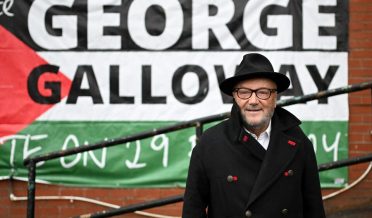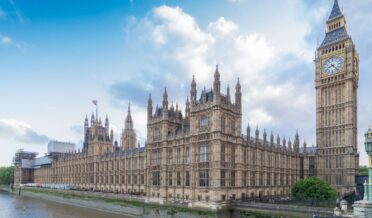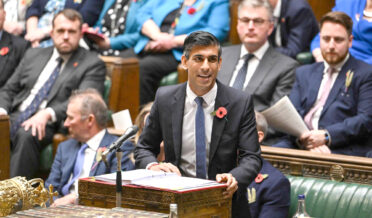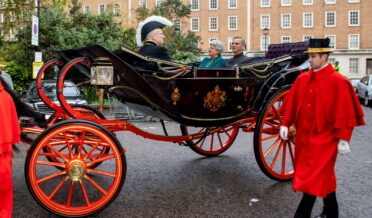Religious conversion, Redemption, or recruitment, exploring the phenomenon of Islamic conversion in UK prisons

By Maqsood Ahmed OBE
he Muslim prison population is now 13,200. It means Muslims are 15 percent of all prisoners but five percent of the British population. In his report on race disparity in the criminal justice system, Rt Hon David Lammy MP notes courts and prosecutors do not record defendants’ religion and said this made it impossible to answer why the Muslim population had surged.
Prisons in modern day Britain are experiencing the challenge of housing an increasing and diverse population of offenders. These inmates; crimes and behaviours have become more aggressive in nature and are countered with legislative control such as harsher sentencing. Consequently, such environments have given birth to a new breed of prisoner who is ever vigilant and reactive to the dynamics of groups (gangs), territory, community, belonging and protection. All essential survival traits in the prison pecking order.
Every prison establishment’s primary focus is to safeguard, educate and effectively rehabilitate offenders. Supplementing this, religious chaplains have played a crucial role in correctional programming. Used rightly, prisons faith-based programmes allow for inward reflection, spiritual guidance, repentance, and acceptance. More recently however, there has been significant media scrutiny and controversy around the soaring number of Muslim prisoners and new Muslim converts in our prisons. This figure is substantially disproportionate and unreflective of the current UK Muslim population, leading some people to question the validity of these conversions. In this paper the authors will explore the possible reasons behind the rising rate of religious conversion to Islam in UK prisons, the correlation of this to identity, group affiliation and spiritual awakening, as well what influence if any prison staff and faith chaplains play in this.
To fully appreciate the intricacy of Muslim conversions in prison one must reflect on the current picture of Muslims in custody. There is a very anxious discourse brewing around the rising number of Muslim inmates in UK prisons both by regulators and the mainstream media. This could by some commentators be dismissed as yet another cog in the Islamophobic media wheel and penal system, with some arguing discrimination around the policing and sentencing of Muslim suspects. In June 2014, the Ministry of Justice indicated that the Muslim prison population had doubled in a decade to over 12,000 inmates. This translates as every 1 in 7 prisoners is a Muslim, compared to every 1 in 20 of the general population. To some extent one could argue this figure has to be framed to represent proportional increase of the prison popular overall.
Former Shadow secretary, Sadiq Khan has also voiced concerns about the number of Muslim offenders in prisons in the London borough. The Independent reports establishments such as HMP Whitemoor, Cambridgeshire, houses up to 43% Muslim residents.1 Some from the Muslim faith may find these figures quite startling, especially since Islam has an aversion to criminality. It begs the question how did we arrive here and who makes up this populace of Muslim criminals?
Dame Anne Owers, (former ) Chief Inspector of prisons presents an explanation in the way of religious conversion and radicalisation. In her 2008 report on HMP Whitemoor she reveals “There was a perception among officers that some Muslim prisoners operated as a gang and put pressures on non-Muslim prisoners to convert, and on other Muslim prisoners to conform to a strict and extreme interpretation of Islamic practice.”2The report suggests coercion techniques are used by Muslim gangs to facilitate the religious conversion of other offenders. Around 30% of Muslim inmates are converts and many of those are according to previous research from Black rather than Asian ethnic groups. In 1999, it was found that 37% of Muslim male prisoners were black compared with 7% of those in the wider population. This date is very significant as it helps to rule out the rise in apparent Islamic extremism from 11 September 2001 as the sole contributing factor to religious conversion in prison. 3
The idea that a trend of religious conversion is emerging may need to be framed within the context of what point during incarceration it was recorded. Further demographics such as age and previous faith or declaration of non-faith would also be insightful. From my personal experience we have also found religious conversion to be prevalent more in male estates rather than female prisons hence our discussion is focussed on this. Notably the number of Muslim females in custody is a lot smaller than their male counterparts. In our experience one of the factors motivating interest in conversion appears to be an ongoing external relationship with a male Muslim partner. There is also the annual spike in other faiths and no-faith offenders wanting to access the Muslim faith room in the lead up to Ramadan and Eid, when additional privileges such as better-quality food are on offer. This is by no means to suggest that female interest in conversion is to do with convenience rather than spiritual ascension. There are cases of genuine moral conversion. One thing is apparent from the research cited that the scale, motivation, and speed of religious change in prisons is a complex political, social, and cultural process which requires further examination.

Key Issues and learning:
There is a complex mix of drivers at play when trying to establish the motivation behind conversion to Islam in UK prisons. Historically, perhaps we would benefit by drawing on examples from examining a penal system more sophisticated than ours like that of American penitentiaries. Interestingly the dynamics of USA prisons have been governed by the ‘racial tags’ of gangs as oppose to their religious markers as such. Understandably so, it is easier to recognise an opponent based on their race. The rise in white supremacist groups has given birth to other racially orientated gangs such as black and Hispanic gangs. These gangs continue to increase racial tension and violence in American prisons. One could say this pattern is reflective of the emerging population changes in American wider society.
One of the exceptions to this pattern is the Nation of Islam, a black supremacist organisation who the Anti-Defamation League say have fought, ‘sometimes even in court to have their chaplains recognised separate to mainstream Muslim chaplains’ .4Interestingly this exclusively black group uses the core principles of Islam such as morality and discipline to organise themselves. However, their teachings of racial exclusivity and hate are misaligned with the true practice of Islam. It is easy to see how the black underclass may be sucked into this moral rhetoric of a superior, educated black race, enticed through religious conversion. Thus, their power comes from racial and supreme unity. Comparatively speaking the religious conversion of offenders in UK prisons also seems to be statistically focussed on the black community. However, as most of those converting is South Asian themselves there is a more streamline conversion to Sunni Islam as oppose to the propagation of racial Islamic groups such as Nation of Islam.
There are serious questions around why the Islamic faith is so powerful in UK prisons. The rise of secularisation in British society the competing Christian faith values are slowly diminishing but the staunch moral code and book of Islam remains in the daily lives of Muslims. It provides rigid structure in the way of 5 daily prayers and the Friday Congregational prayer in prisons demonstrates the sheer power which the Muslim residents in Prison have of ‘unity and togetherness’. This is when prison security is at its most vigilant in male estates. And then of course there is the promise in the of Islam. Surely a reward which a sinner (offender) would want to claim. Some would say that that the conversation to Islam may for some more association time, better or different religious compliance food. Access to a mentor in the form of Muslim Chaplain. I would argue that the Muslim Prison have lot more time to reflect on their offence/ crime and opportunity for repentance and redemption, however no one has followed or done any research as hat happen s to such individual upon release, do they continue with their new found faith or they abandoned ? there have been some incidents where upon release a family member would come to the local mosque and hand over Quran and other Islamic artefacts to Imam, say “ our child does not practice new faith”
I would like to suggest there might be a useful exploration of what questions inmates perceive are most usefully answered by ‘I am Muslim’. There is a psychological dimension here, if an individual seeking internal change, has for example had a complex and sustained relationship with intoxicants, declaration of a faith places the individual in an entirely different domain, one that demands a significant observation from others and remapping of relationships and behaviours. It therefore is a way of intervening in established habit and behaviours. It also creates two new levels of interaction- a framing of the life history through the prism of new ideas and understanding and provides membership to a wider community that want to talk about this. These reasons are very different from the external rationalisations for conversion.

On a different level the authors observe that to some extent the prison population and the constraints and conditions of housing may be seen by some as an opportunity by Muslim offenders, a way of reaching those most vulnerable who may not otherwise seek religion and are perhaps to some extent more vulnerable to indoctrination. If the motivation behind this certain spread of Islam is sinister then this indeed raises the issue of favours and needs being addressed now rather than being ‘banked’ in lieu of later payments as demands of the individual, not only in prison but also beyond. In cases of genuine conversion, no doubt this act of conversion will by extra kudos to the change of faith from his peers as they all work towards the ‘sinner to saint’ status. Nobody is too far gone for god and this buys mutual merit for both parties.
However, are we drawing the line of indoctrination and radicalisation too soon? Quraishi points out sometimes the discrimination of officers based on grounds of ethnicity or religious practice in prisons such as “being closely ‘policed’ during Ramadan, or having religious articles such as texts, clothing and prayer mats defiled by staff and non-Muslim cellmates” plays a crucial role in the way Muslim inmates project themselves. Quraishi says that as well as the prisoners personally being dishonoured, they believe they also have to defend their Islamic faith. This can be seen to be a continuation of wider discrimination in British and Foreign policies against Muslims.5 This may justify some of the Muslim prisoners gang mentality and the flock’s enforcement of strict Sharia practice in maximum security prisons, brotherhood, and ideas of ‘Islam against the western world’. These can spill over to other prisoners translating into a pseudo-jihad ‘you are either with us or against us’. In this instance it would be easy to see how coerced conversion may come about, especially with black prisoners who undoubtedly will also be subject to discrimination. This is as much to do with officer’s treatment of offender, interaction between offenders as a population, racial discrimination as well as religious awareness. On a more deeper level, the territorial language of ‘us and them’ and suggests dialogues of conflict management, but are there other mechanisms at work here, by framing the responses of others as ‘dishonouring’ might there be an argument of an emotive high ground being claimed. A position which could be at odds with the more simplistic motivations of others trying to ‘get even’ or ‘bring someone down’, for no more reason than resentment. The conflict as a power struggle reveals new ways in which one party/group/individual can be ‘attacked’ or oppressed, to re-assert oneself as different and that deference needs to acknowledged and respected. It requires that others reframe and re-evaluate relationships; such change can be particularly uncomfortable and inconvenient, sometimes deliberately so to cause friction with those that would otherwise define and limit you. If framed within a context of having been ‘privileged in some way’, is it not also likely, if inappropriate, that people will seek to spoil things for the convert.

The relationship between Muslim Chaplains and Muslim offenders are questionable too. Since the establishment of the Muslim Chaplain by myself at the HM Prison service in the 1990s, the perceived status of the ‘visiting chaplain’ has changed. Where once the role was fulfilled on a voluntary capacity the prison imams are now formally employed to address this duty. The Imams also have more involvement in the general rehabilitation programmes of prisoners and voice and influence at senior management levels. Unknowingly, this may have led to imams becoming institutionalised and their faith based pastoral duties are sometimes questioned by prisoners- can these imams be trusted as confidantes considering who their paymaster is? This void may potentially open another vacuum for leadership amongst the offenders which may fuel a more radical approach.
Owners and other watchdogs infer that the Islamic religious conversions in prisons are orchestrated and they may be a product of the brutal necessity for finding ways to prevail in prison. There is to some degree an argument that these two are either interrelated or dualistic. Prisons can be a very threatening environment where physical and sexual violence can be inflicted on those most weak and vulnerable. In this case a new prison arrival may be wise to seek affiliation with what Owers describes as “support and protection in a group with a powerful identity”.2 The Islamic faith offers this and subscribing to this faith group would no doubt play a big part in status building and social capital, inevitably this attracts more investment and power. This is by no means suggests conversions are all one sided and instigated by second parties. Outside of the scepticism and general theories the authors have been witness to genuine conversions in prisons, where even upon release ex-prisoners have remained steadfast in their faith.

Ways forward:
Prisoner transformation through religious conversion is a very complex area of research still very much in infancy. The initial findings suggest religious conversion pays a key role is shaping identity be this pro-social and rehabilitative or in other cases potentially anti-social, some say leading to crime and radicalisation. There is definite value in further research to explore a continuum for reasoning- the move away from the simplistic arguments of conversion for the sake of ‘convenience’ at one spectrum to self-selected ‘genuine conversion’ through to aggressive and ‘coerced conversion’.
There is no clear-cut answer as to why we have such a high number of Islamic conversions in UK prisons. The current one-sided sway towards the radicalisation of prisoners is potentially damaging, in some respect encouraging moral panic. It distracts from pertinent issues such as the significance of faith led programmes for effective resettlement and rehabilitation of a largely non radicalised Muslim prison population. It is worth mentioning that University of London Birkbeck College intended research on Conversation to Islam in Prison may shed more light on this area. There is also desperate need for Muslim Community to acknowledge this issue of Muslim in Criminal Justice System in UK and start to work on the crime prevention and resettlement and rehabilitation of ex-offender. Muslim charities in UK need to invest on this area od work and address denial that Muslim are not in the Prisons.
Note: References
1.http://www.independent.co.uk/news/uk/politics/number-of-muslims-in-prison-doubles-in-decade-to-12000-9222237.html
2.http://news.bbc.co.uk/1/hi/uk/7662525.stm 3.http://www.bbc.co.uk/blogs/thereporters/markeaston/2010/06/islam_prison_1.html
4.http://www.adl.org/combating-hate/domestic-extremism-terrorism/c/bigotry-behind-bars-racist-groups-in-US-prisons.html#.VWtzP9JViko
- Peter, F., & Ortega, R. (Eds.). (2014). Islamic Movements of Europe (Vol. 21). IB Tauris.Page 262: Muslims in Prison and processes of radicalisation: The United Kingdom author Muzammil Quraishi
(in) Visibility Barrow Cadbury Trust/ Muslim Hands 2018
Muslim Women in Prison by Buncy S, Ishtiaq Ahmed 2016 Huddersfield Muslim Association (an expiatory paper)







